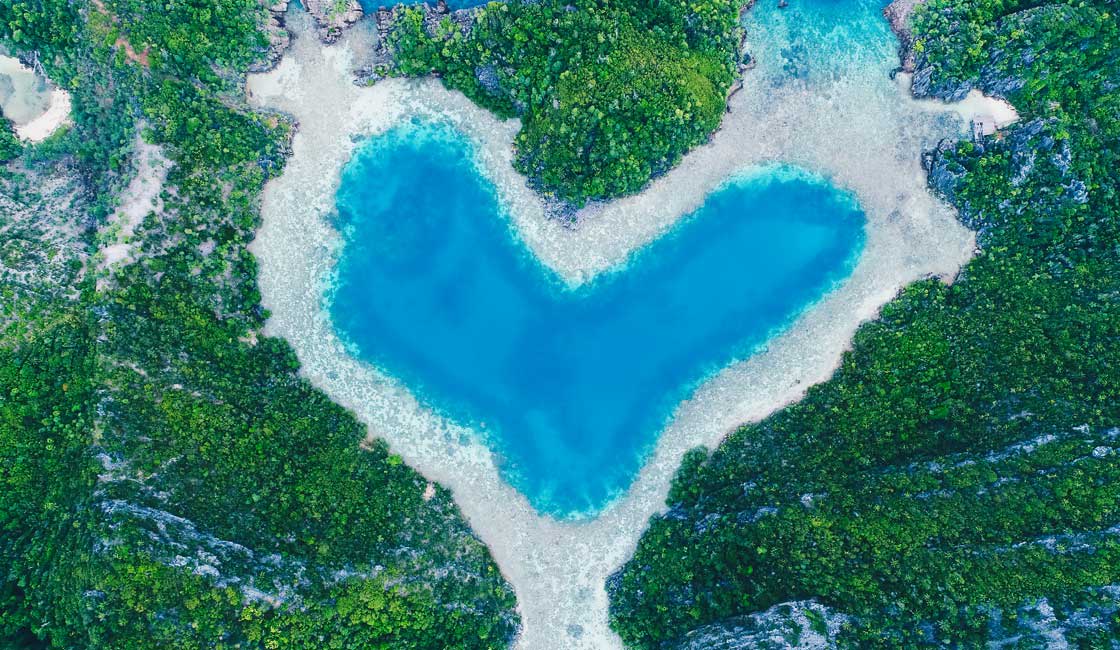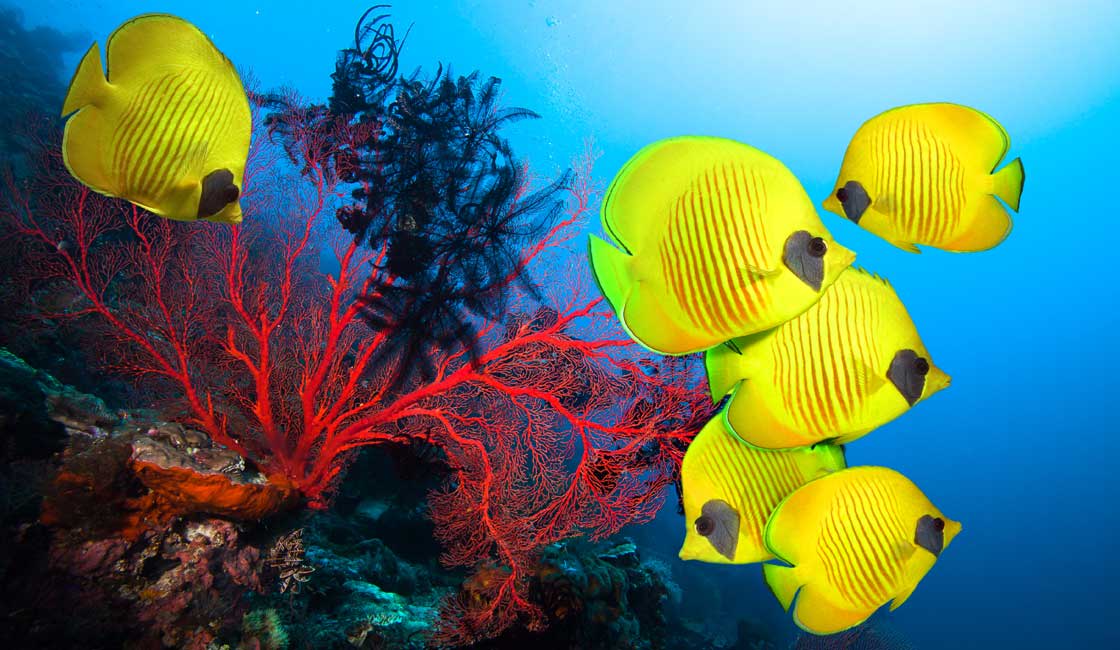
A dazzling kaleidoscope of colors and creatures flashing beneath the surface. An underwater megalopolis bustling with life. An alien landscape like none other. With more marine species than anywhere else on Earth; this is the Coral Triangle!
It might not be as famous as its celebrity sister, the Great Barrier Reef, but the Coral Triangle is one of the most important areas of biodiversity on the planet. Home to over 30% of the world’s coral reefs, it has well and truly earned its title as the ‘Amazon of the Ocean’ – a truly spectacular place.
Where exactly is the Coral Triangle and how big is it? Stretching 6 million square kilometers (2.3 million square miles), this marine paradise is a roughly triangular-shaped region in Southeast Asia, made up of a huge network of vibrant coral reefs.
The Coral Triangle covers two biogeographic areas – the Far Southwestern Pacific Region and the Indonesian-Philippines Region, occupying the waters surrounding the countries of the Philippines, Indonesia, Malaysia, Papua New Guinea, the Solomon Islands, and Timor-Leste.
The Coral Triangle is basically an almighty oceanic nursery, recognized, visited, and supported for its astonishing tapestry of coral species, and rich fabric of marine biodiversity. It sustains more coral reef species than any other place on the planet, a high number of marine turtle species, thousands of coral reef fish species, not to mention the livelihoods of over 100 million people.

Stunning marine in the Coral Triangle
There is nowhere quite like the Coral Triangle for wildlife! A technicolor underwater rainforest, with the shockingly vivid pink of the corals, electric blues, fiery oranges, and acid greens of the fish. All set against the crystalline turquoise backdrop of the ocean.
It’s not fully known why this region is quite so bountiful for living creatures, great and small. It’s thought that evolution-wise it might be down to a large number of prevailing currents, sweeping a great range of species into the same area. Species have adapted to the geographically varied landscapes of the region, evolving and forming new subspecies. Its location between the Indian and the Pacific Oceans means that species from both bodies of water overlap, once again diversifying the ecosystem.
Unbelievably, a huge 76% of the world’s coral species are found here, officially giving it the highest coral diversity in the world. This includes 15 endemic species – types that cannot be found anywhere else.
Turtles also do particularly well here – in fact, the Coral Triangle supports six of the world’s seven marine turtle species! This includes the lovely leatherback marine turtle, found throughout Indonesia, Papua New Guinea, and the Solomon Islands.
Of the world’s 6000 different species of coral reef fish, the Coral Triangle is home to 37% – that’s a massive 2,228 different types (including 235 endemic species)! This is a higher diversity of reef fish than anywhere else on the planet, and 56% of the coral reef fishes in the Indo-Pacific region.
Many aquatic mammals can be found in these waters, from the largest animal to ever occupy our world – the blue whale – to the smaller sperm whale, dolphin, and porpoise. Even the rare dugong can be sighted in these waters – an animal that genetically has more in common with elephants than other marine mammals!
Divers and snorkelers here are certainly in for a treat – diving cruises in Indonesia are most divers’ dream! These beautiful reefs are teeming with fish such as many species of groupers, the humphead wrasse (females can live up to 50 years!), charismatic manta and Mobula rays, incredibly cute pygmy seahorses, and of course, the iconic clownfish. The list could go on forever!

Diving at Coral Triangle
The areas inside the Coral Triangle are defined by certain scientific criteria – mainly that of hosting at least 500 species of reef-building coral and vast habitat diversity. However, this fragile underwater ecosystem is, like most of our planet’s ecology, at risk from several threats.
As the devastating effects of climate change march on, the reefs are increasingly at risk from bleaching, acidification, and rising water temperatures. The race has begun to save, support, and safeguard this remarkable corner of our world.
Man’s footprint is felt more directly in other ways here too. Many coastal communities rely on the Coral Triangle for their livelihoods. Around 360 million people live in and around the Triangle, of which roughly 120 million people live directly off the sea’s resources in one way or another, which is leading to overfishing, pollution, and habitat destruction.
Tuna from these waters sustains a multi-billion dollar tuna fish industry supplying consumers all over the world. Other products such as shark fin, live reef fish, and turtle-based products are in high demand, putting an unsustainable strain on the creatures and their habitats.
If these resources are not managed sustainably, it will end up impacting the people who live here as well as the ecology. Overfishing inevitably leads to the collapse of the local fishing industry itself, so everyone will benefit from reformed fishing practices.
The tourism industry here is booming, with eco-tourism increasing each year. This puts a more focused world-view on the health and protection of these precious reef systems, meaning conservation is of growing economic concern and importance. Regional governments are now working with international conservation groups such as the World Wide Fund for Nature (WWF). They’re fighting to help keep these environments safe and intact for travelers from all over the world and, by proxy, the creatures that live here.
You can experience the Coral Triangle responsibly on an Indonesia vacation aboard one of our incredible Indonesia cruises. Contact us directly for expert advice on what some consider the hottest new travel destination.
While Rainforest Cruises aim to provide accurate and up-to-date information, we make no representations as to the accuracy or completeness of any information herein or found by following any link on this site. Rainforest Cruises cannot and will not accept responsibility for any omissions or inaccuracies, or for any consequences arising therefrom, including any losses, injuries, or damages resulting from the display or use of this information.




